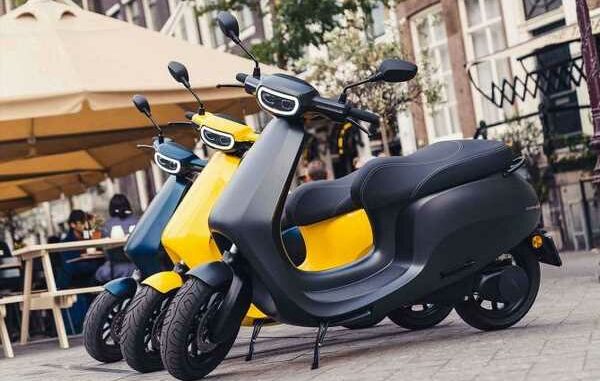
Electric scooter registrations of eight companies which represent 95 per cent of the market have seen a sharp fall of over 24 per cent in May.
They have registered 32,680 electric scooters against 43,098 in April according to VAHAN data from the Ministry of Road Transport and Highways available till the evening of 31 May.
Auto analysts say the fall is a reflection of the initial pent up demand in the market for such vehicles,which was evinced in huge bookings, being met.
The numbers will become even more ‘realistic’, they say.
The registration numbers in May have seen Ola Electric cede its number one position which it achieved in April to Okinawa.
Ola registration numbers hit 8704, a fall of over 31 per cent from April.
Okinawa had 8894 registrations though it too saw a fall of 19 per cent from April.
Hero Electric has continued its sharp slide downwards.
Ather Energy, which recently received $128 million of fresh funding from the National Investment and Infrastructure Fund and Hero MotoCorp (which has a 35 per cent equity), saw registrations rise by 26 per cent in May over the previous month. But even with the rise, the figure still stood at only 3110 vehicles.
The numbers do not include those of Bajaj Auto and TVS which do not report it separately on VAHAN site.
Harshvardhan Sharma, head of the auto retail consulting practice in Nomura, said pent up demand seems to have been satisfied.
“It is the natural buoyancy of the market which is at play now after the fizz,” he said.
Sharma mentioned three other reasons for the fall: demand hesitation due to electric scooters catching fire, the chip shortage and supply constraints, and low demand seasonality in these months.
Electric vehicle makers blame the numbers on supply chain constraints and say that they can make more vehicles to meet growing orders but don’t have chips and components.
Ather Energy co-founder Tarun Mehta said that if the chip shortage is not exacerbated further, the industry should be able to produce 100,000 electric scooters by the end of the month.
Demand and bookings were going up, he said.
Ather can make 10,000 vehicles a month to meet demand but Mehta said it is currently using only 30 per cent of capacity.
Hero Electric declined to comment on the decline and Ola Electric did not respond to queries.
The February and March figures had prompted analysts to make ambitious projections.
In February, registrations were up 15 per cent over January.
In March, they were up by a staggering 58 per cent over February.
Based on these figures, analysts projected that, despite the chip shortage, electric scooters would hit 0.7-0.8 million vehicles at the end of the calendar year.
This would have represented an inflexion point for the industry; it would have represented a 13 per cent share of the overall scooter market (ICE and electric scooters).
Analysts had also estimated that in 2023, electric scooters would go up to 1.5-2 million, marking another milestone by becoming 10 per cent of the total two wheeler market (scooters and mobikes) which is around 18-20 million per annum.
This view needs to be revised.
Growth stagnated in April, although it held on to March levels.
In May, the average registration of the first five months of the year stood at 34,700 vehicles per month.
The average monthly figure the industry needs is over 61,000 in order to reach even 0.6 million for this calendar year.
Source: Read Full Article
